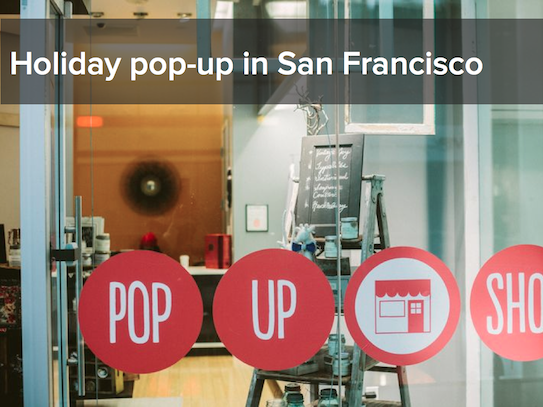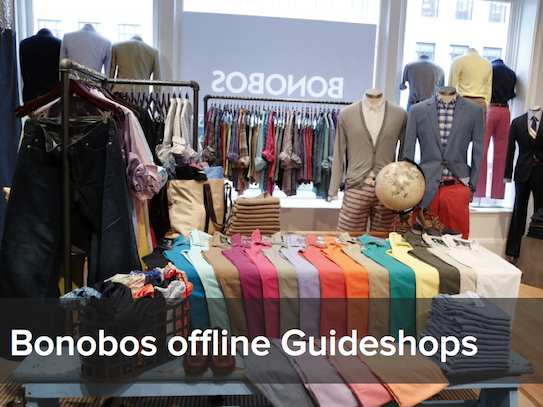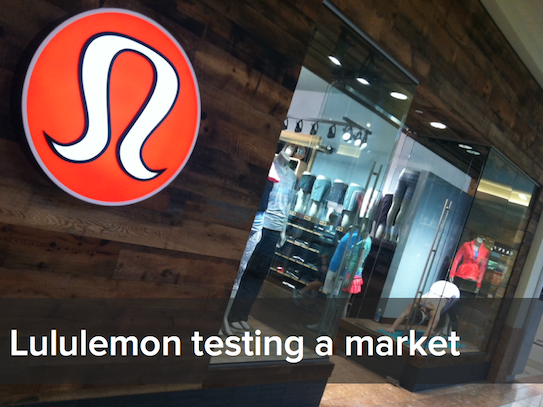I recently spoke at the RealTech SF 2013 conference. The conference focuses on new companies and technology in the real estate industry. The event is run by Reesio. If you're in the real estate space or interested in the intersection of real estate and technology, it's a great event to attend.
Retail is changing. Commercial real estate is evolving. It's an exciting time to be at the intersection of physical space and technology. While some posit that physical retail will die, I subscribe to the belief that software will help retail evolve and become more efficient and data driven.
The growth strategy for retailers is evolving. Retail now has stages for smarter growth. The growth narrative for a retailer goes something like this:
* First, start an online store through a hosted platform such as Storenvy or Etsy;
* Second, move to a self-hosted ecommerce website;
* Third, test a temporary brick & mortar store centered on a event or holiday;
* Fourth, identify a offline space to open a semi-permanent store
Retail is applying frameworks made popular in the valley. Specifically, the lean startup method is being applied to brick and mortar stores in the form of lean retail. Just as lean startups favor low cost experimentation, shorter cycle times, customer development, and testing hypothesis, lean retail applies the framework to opening brick and mortar stores. Lean retail, known in popular media as pop-up shops, is comprised of four tenets which are outlined below.
1. Shorter-Term
Instead of 5-10 year leases for commercial retail space, lean retail promotes short-term engagements which could range from a few weeks to a few months. These short-term engagements are largely driven by two factors: (1) holidays such as Christmas or Halloween and (2) events such as Fashion Week and SXSW. This enables a brand to take advantage of peak consumer shopping periods without being present during slow periods.
One example of this is the Rent The Runway pop-up closets opened during Fashion Week in New York City.

2. Lower Risk
Lean retail in the form of pop-up shops are lower risk because on the cost side of the equation these stores require less overhead and don't require much if any tenant improvements (TI) because the spaces are turnkey. On the revenue side of the equation these stores are able to take advantage of high-foot traffic locations. Because of this retailers are able to minimize their downside while better targeting locations which increases their upside.
One example of creating a great retail store with low TI was the holiday pop-up shop in at Westfield San Francisco Centre in December. Local designers were able to set up their store in the space that was already built out with fixtures, lighting, wifi, etc. and only required the brand to spend money on a few temporary racks and sign decals for the front of the store.

3 Versatility
Pop-up shops have many use cases. Retailers and brands open pop-up shops for a plethora of objectives. Some examples include:
* An ecommerce brand going offline to better connect with their customers
* Entrepreneurs and designers opening their own store as they expand their business
* Large brands aiming to increase awareness and brand activation
* A retailer entering a new market

4. Learn Faster
Pop-up shops allow brands and retailers to take user acquisition and marketing frameworks that are popular in the online world and apply them to the offline world. They can effectively A/B test physical space. This allows brands to target individual spaces, gather feedback faster and understand the conversion funnels of an individual space. Brands can test retail space, product launches, and new concepts without the capital outlay that was previously required to enter the retail world.
One prominent example of A/B testing retail space is Lululemon. Instead of signing a 5 or 10 year lease upfront, Lelulemon will set up a temporary pop-up store to test a market and obtain feedback before signing a long-term lease.
